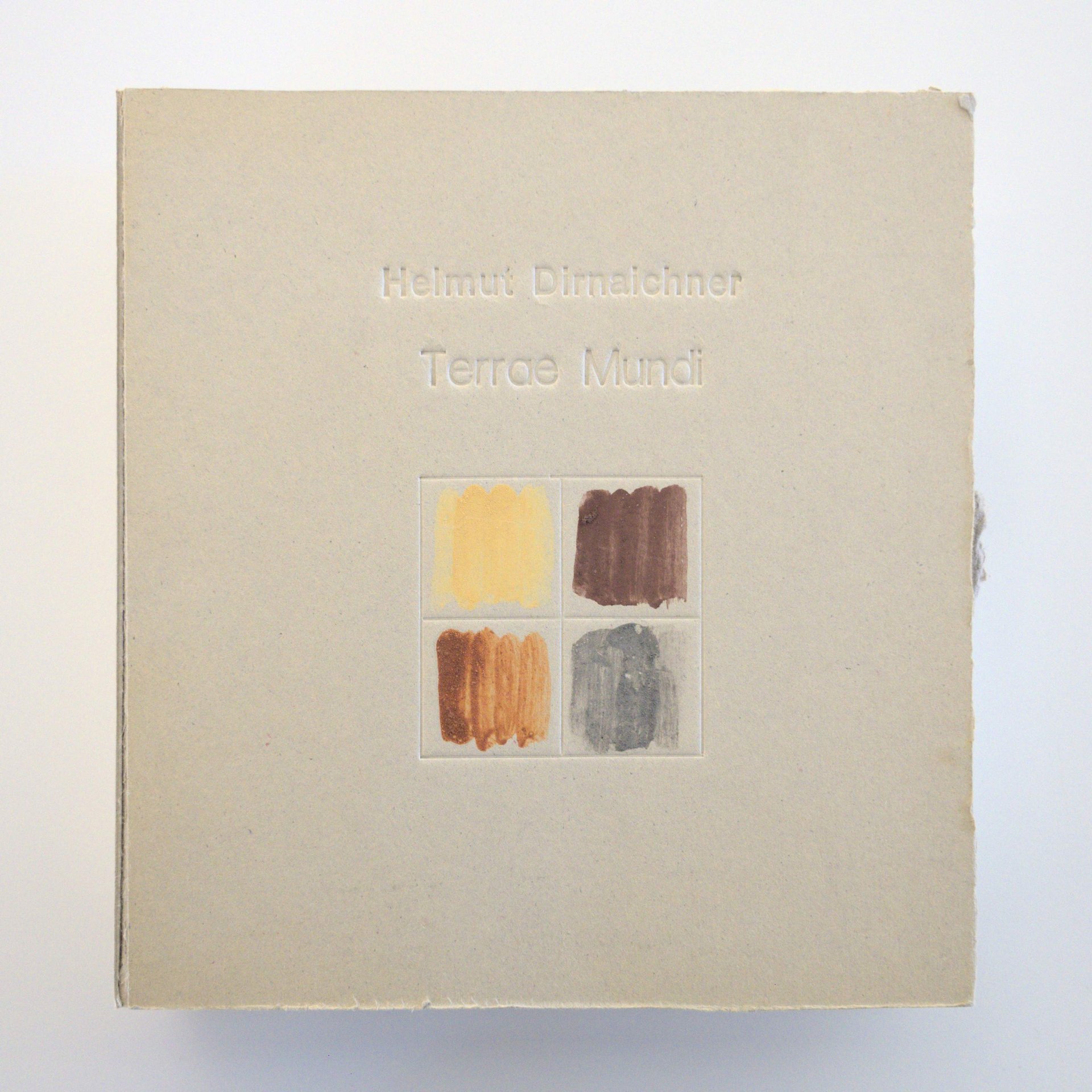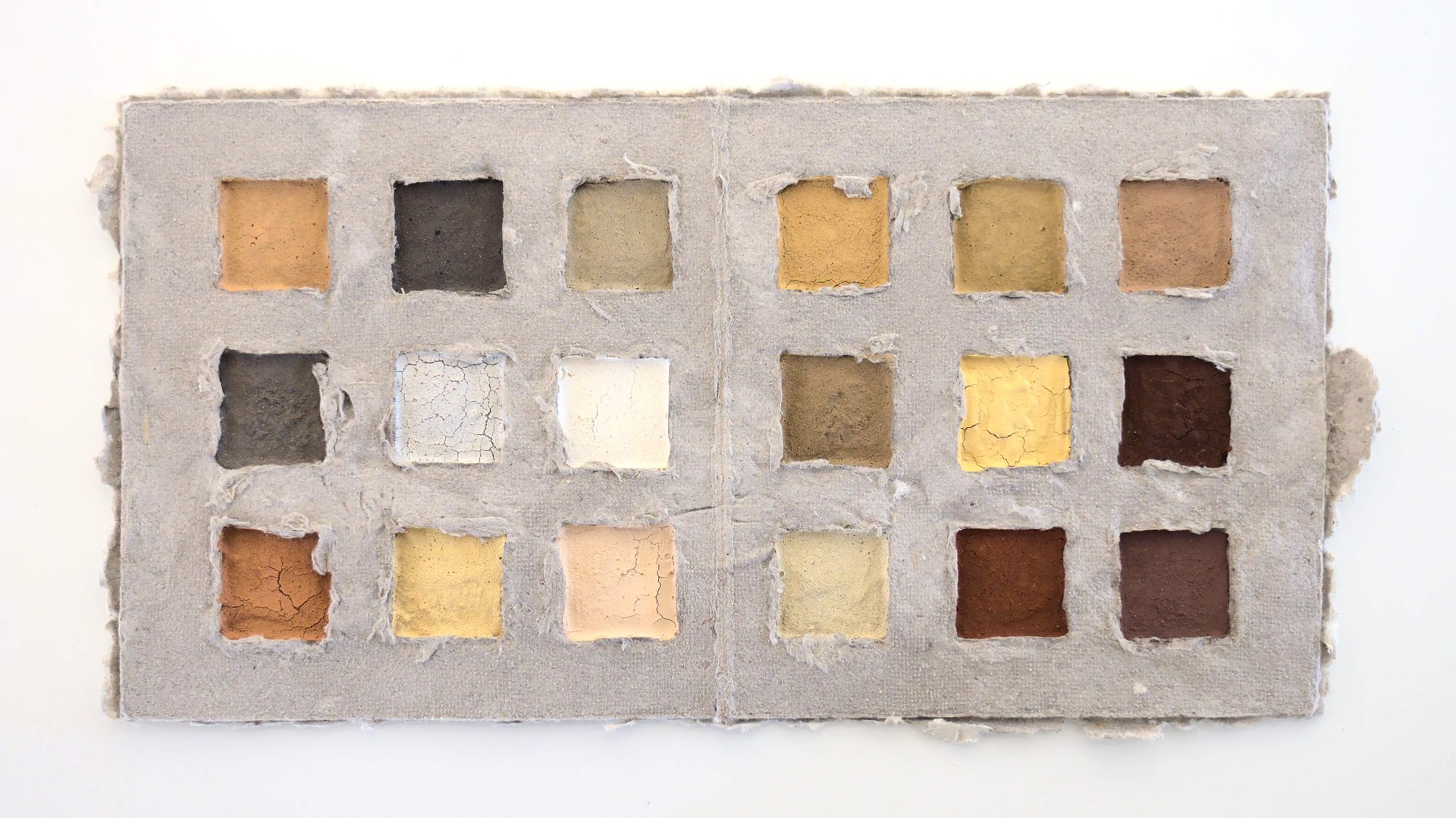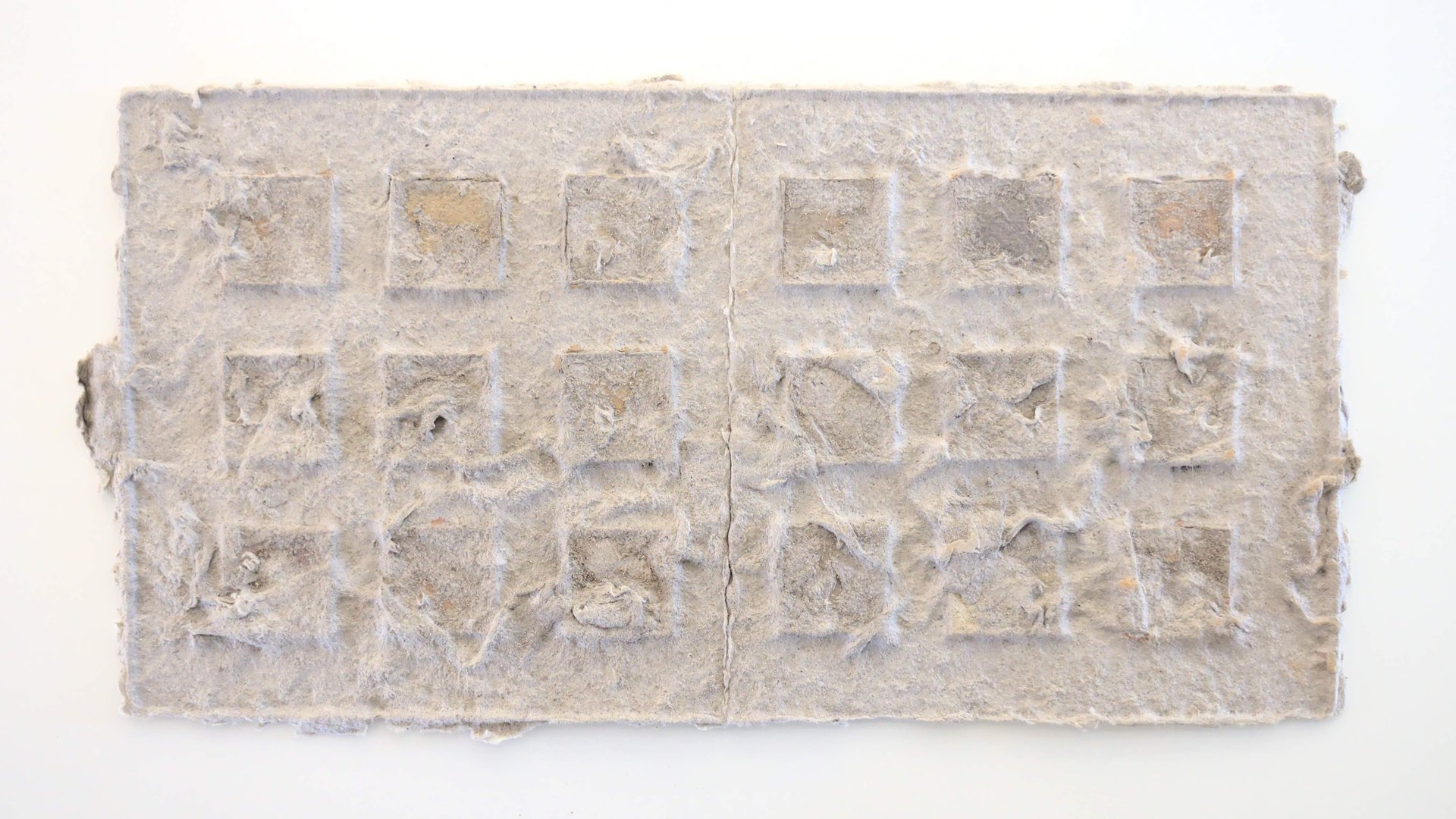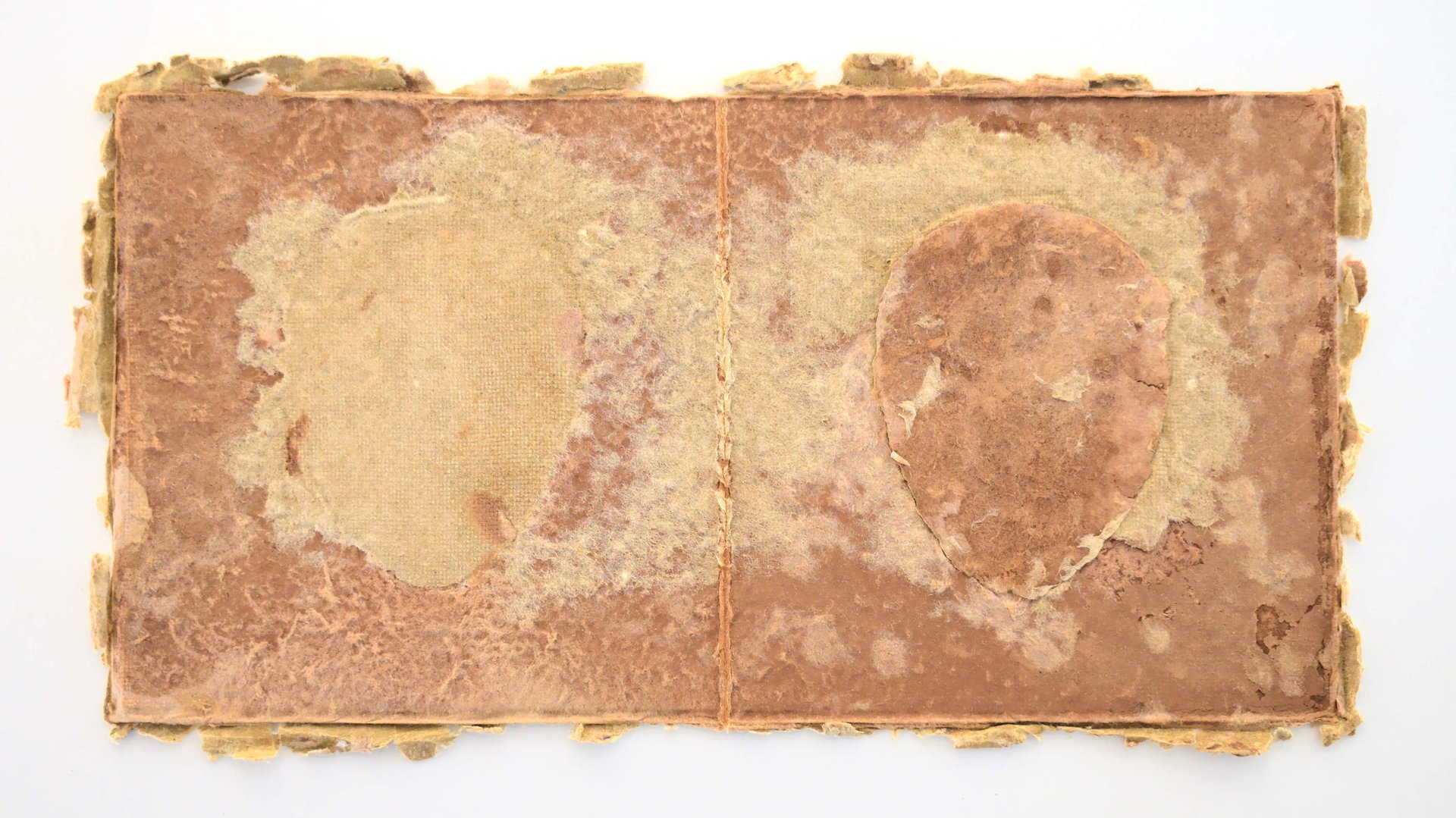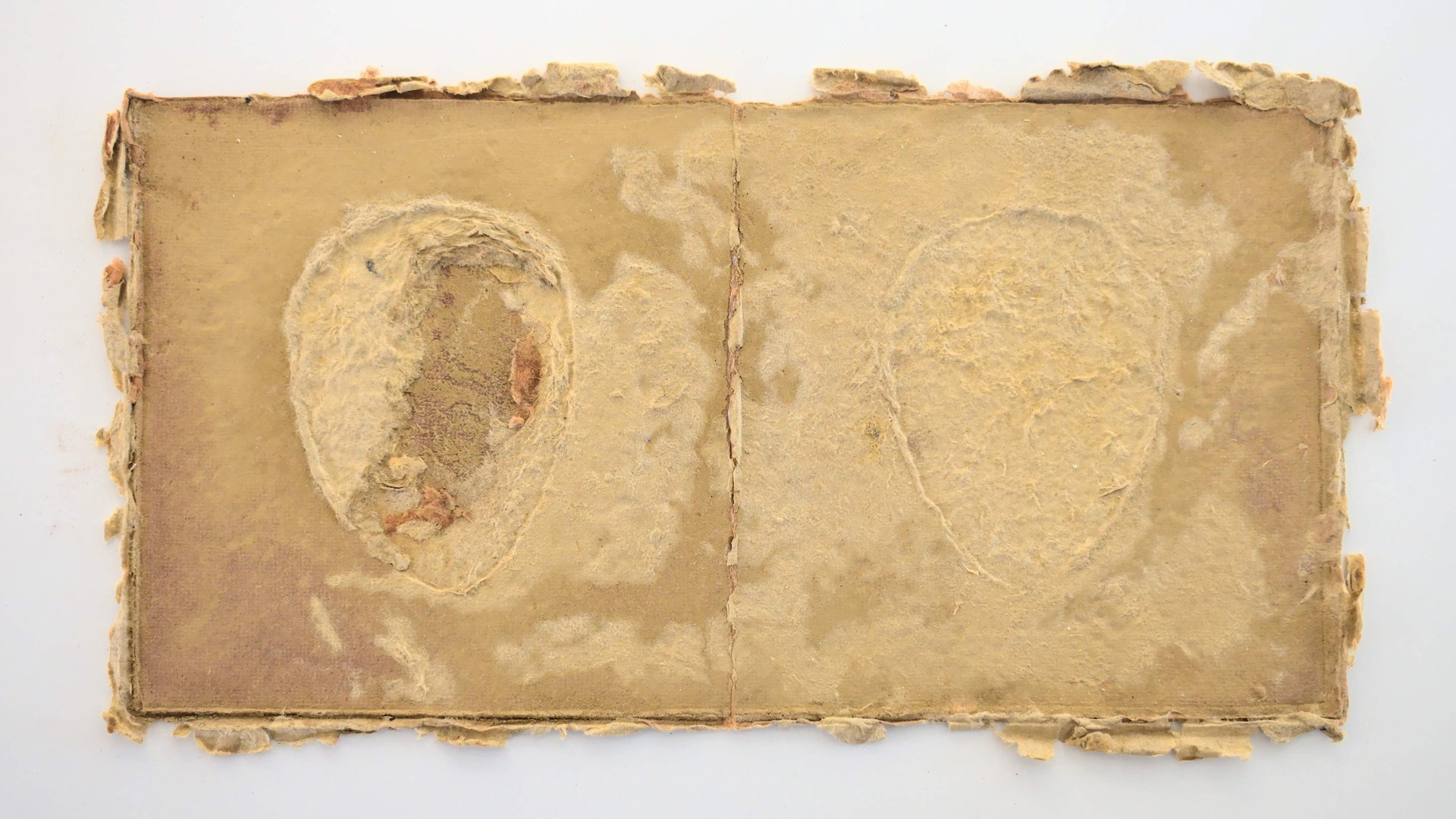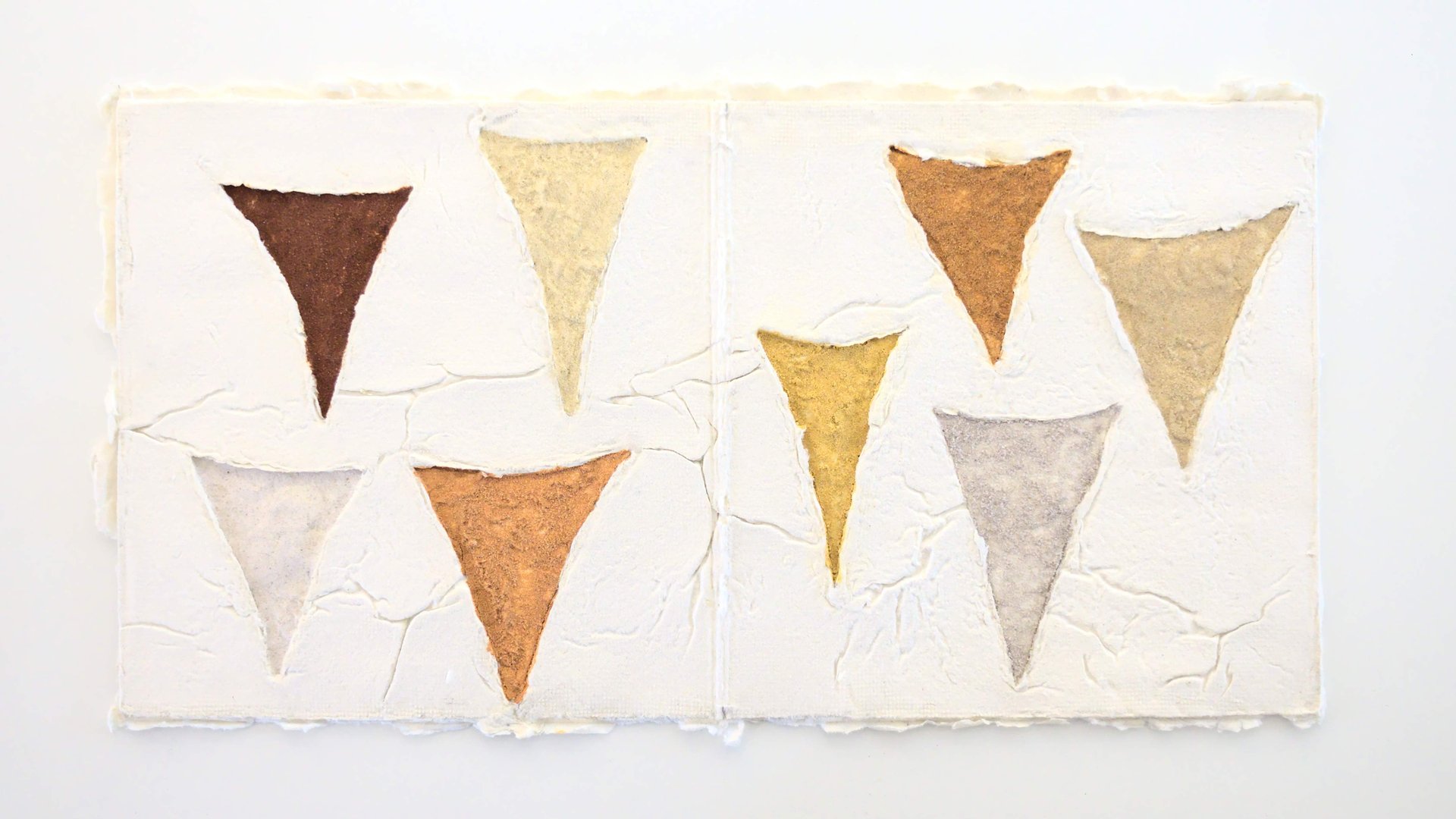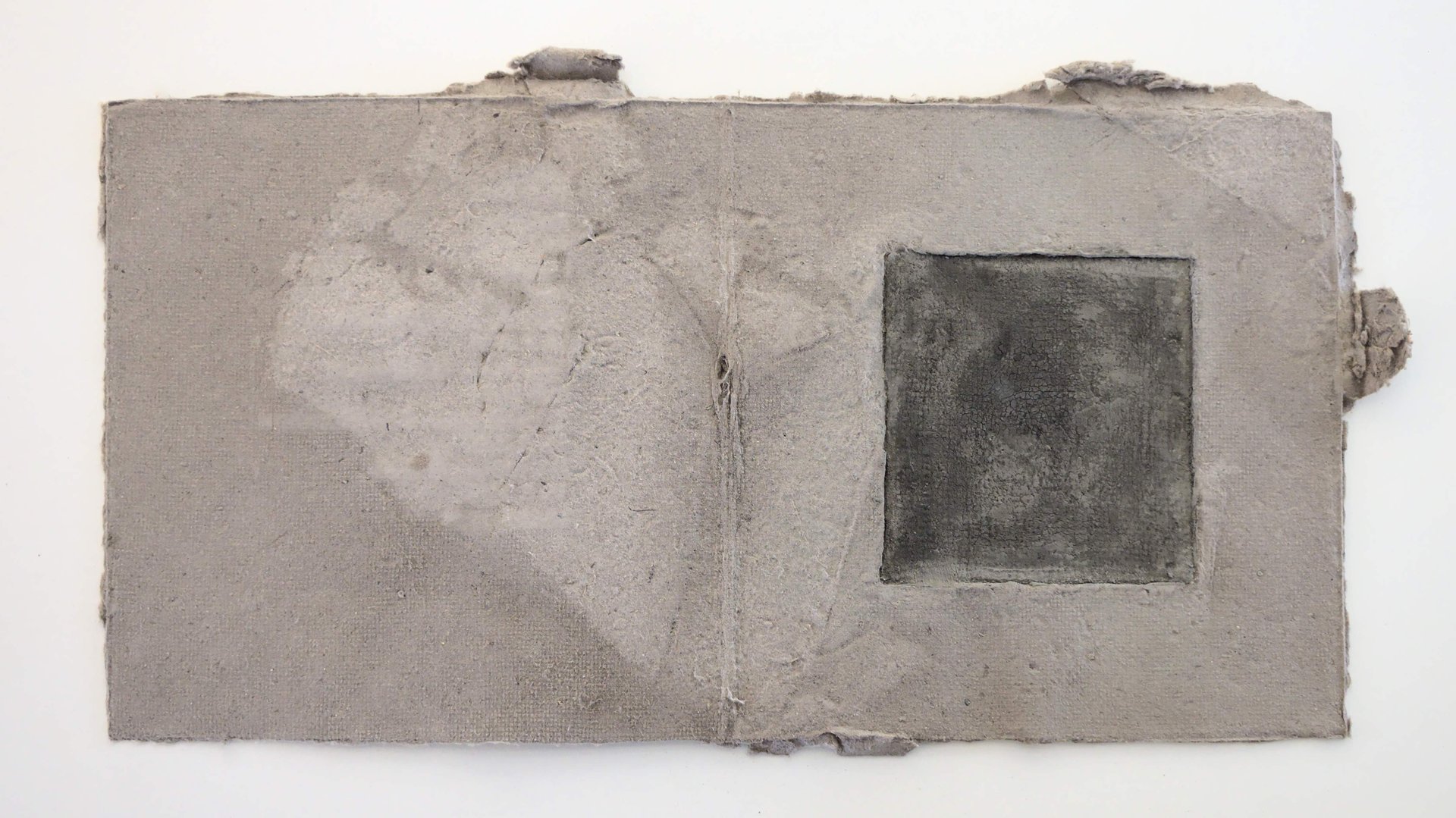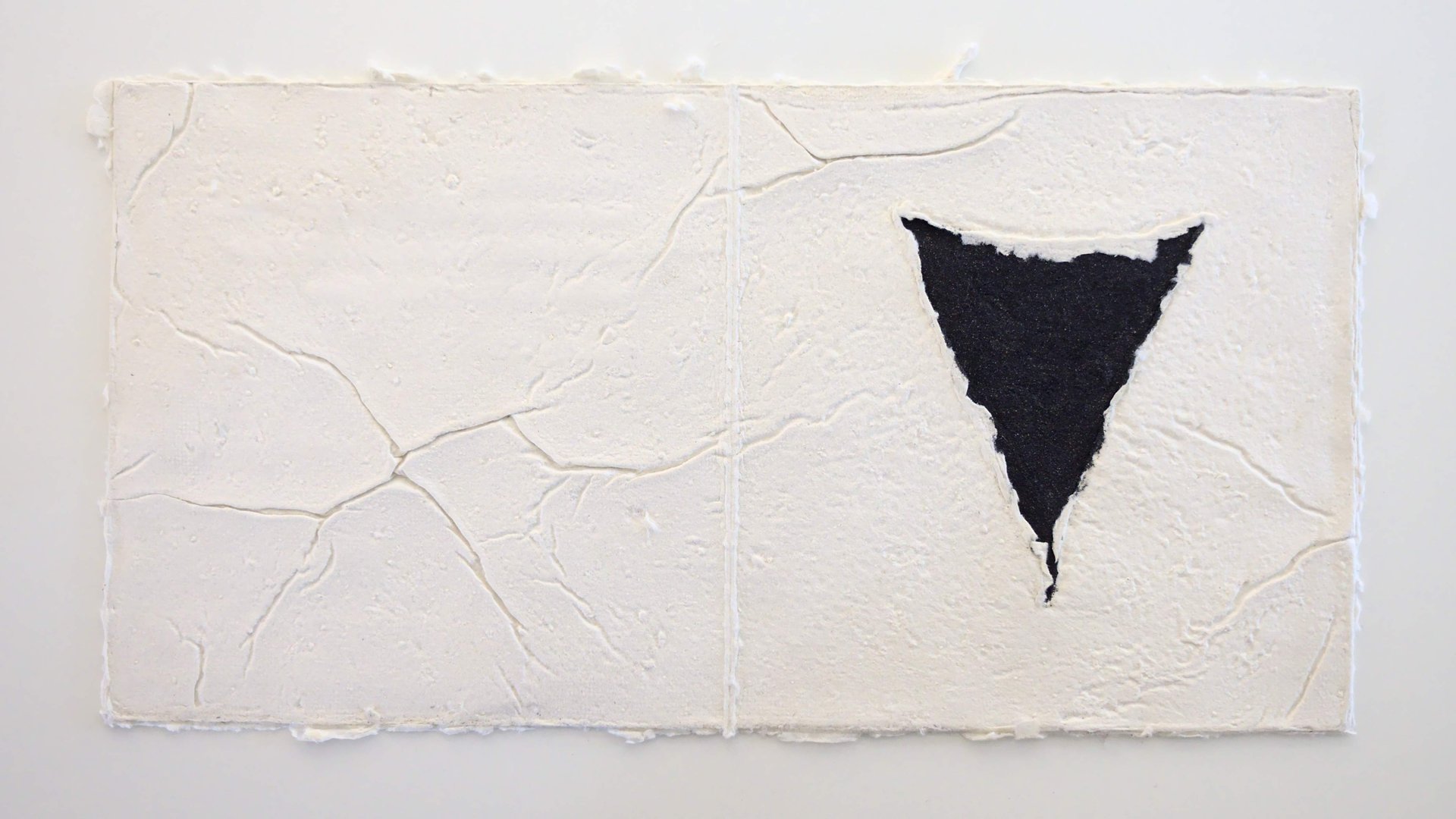the essence of the names of the minerals is colour. the language and the place may change, but they remain attached to their light. they move from nature towards the book and are mounted in a script that has neither letter nor sounds, but only forms and colours. the name of lapis lazuli displays the light that resides in it; it displays the strips of sky imprisoned in its substance. obsidian clasps the night in its reflections. cinnabar defends its sunsets from dissipation. the names of stone are unwritten. they are metaphors for the name that has never been written in the book, only in nature, but that nonetheless blows over the book like a breath, a voice, a first cause. but in the artistic experience of the book made by helmut dirnaichner there is nothing sacred: the sacred has been transformed into the rigour that pursues the essential. the material is exposed to the light as if this were a necessity, its foundation. [...]
from the stone to the form, from the earth to the page: becoming a page–or folio–of nature and its colours. the page protects the material, accepts its form, makes its light its own. the hospitality of the book: this is but a fragment of the hospitality of nature which man has never managed to reciprocate, except with works of destruction. in this work of art resides reflection on the preservation of what is natural. and there is reflection on hospitality as recognition of the other that consists of light, stone and form.
a deleted script – or a script that has but one alphabet, that of nature. it is an alphabet that recounts the origins, its distance from the words of the world, the babel of speech. the lines of hölderlin resound close to this path: "ich verstand die stille des äthers, / der menschen worte verstand ich nie". the white of the deletion: an adventure that abolishes, in the self-discipline of art, the sound of a representation crowded with objects, faces and stories. in this silence of the representation, in this absence of mimesis, the practice of art recovers its own dimension. we could say that it comes close to the truth, the truth of form (because the other truth is immersed in silence—in deletion in fact).
antonio prete, 1997 (excerpt from "the book, the light" in "helmut dirnaichner, trasparente, steine – lichtfelder – räume," trans. david stanton (nurenberg: verlag für moderne kunst nürnberg, 1997).
